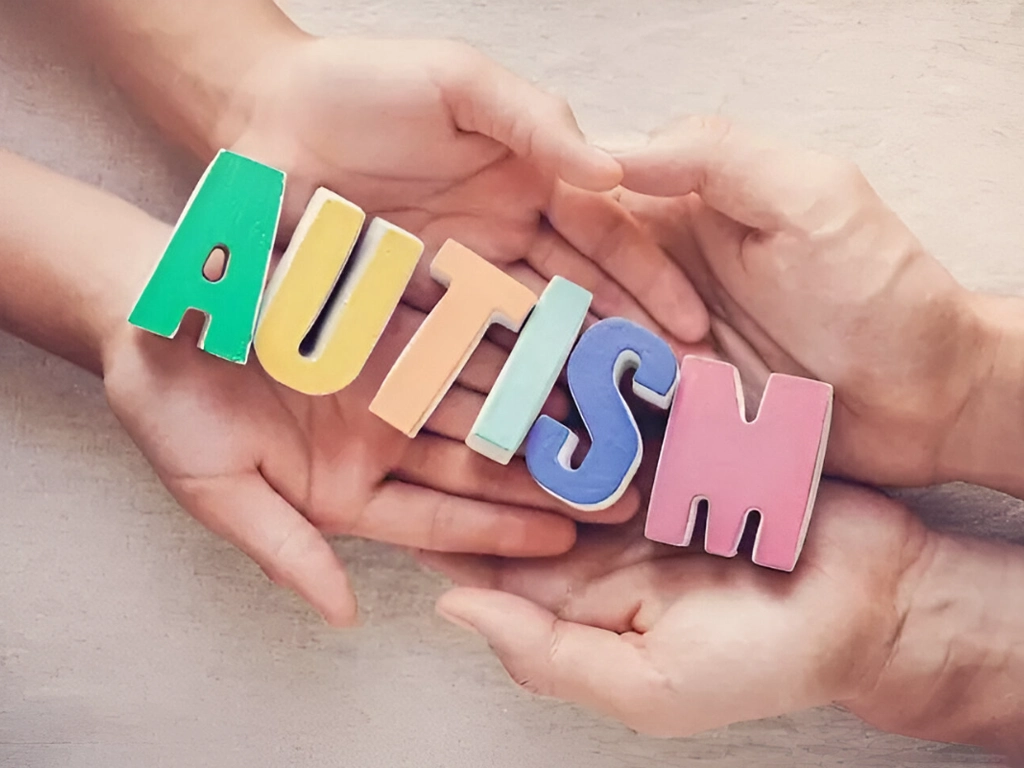Autism, a neurodevelopmental condition, intricately influences the way individuals interact with the world. In this exploration, we delve into the strengths of autism, abilities, and challenges that define the unique spectrum of autism, unraveling its complexities and celebrating the diversity it brings.
Understanding Autism Spectrum Disorder: A Multifaceted Landscape
Autism Spectrum Disorder (ASD) is a complex neurodevelopmental condition that encompasses a spectrum of traits, behaviors, and characteristics. At the heart of this diverse landscape lies a profound impact on how individuals perceive, process, and engage with the world around them.
Within the spectrum, a tapestry of unique strengths, abilities, and challenges unfolds. The term “autistic people” embraces the richness of this diversity, acknowledging the individuality that defines each person on the spectrum. This multifaceted landscape challenges preconceptions, urging us to explore the myriad ways in which autism manifests.
Strengths and Abilities: Unveiling the Extraordinary Tapestry
Amidst the nuanced spectrum of autism, attention to detail emerges as a remarkable strength. Autistic individuals possess an innate ability to focus with unparalleled intensity, often leading to exceptional talents and skills. This attention to detail forms the foundation of their extraordinary abilities, contributing to a tapestry woven with unique strengths.
As we navigate the landscape of strengths and abilities, special interests emerge as vibrant threads in the autistic tapestry. These passionate pursuits not only captivate the attention of autistic individuals but also serve as portals to expertise. Whether it’s an affinity for mathematics, a deep fascination with specific historical periods, or an intense focus on artistic endeavors, these special interests become conduits for self-expression and accomplishment.
Social Interaction and Communication: Navigating Unique Challenges
Within the realm of strengths and abilities, challenges arise in the domains of social interaction and communication. Autistic individuals often navigate a nuanced landscape where certain aspects of social skills and communication present unique hurdles. Recognizing and understanding these challenges is fundamental to fostering empathy and creating inclusive environments.
Social interaction can be akin to navigating a complex dance, where the steps are intricate, and the rhythm varies. Autistic individuals may face difficulties interpreting non-verbal cues, such as facial expressions and body language. However, these challenges don’t diminish the depth of their emotions or the desire for meaningful connections.
Communication, both verbal and non-verbal, may pose hurdles, but it also unveils a distinct mode of expression. Many autistic individuals develop alternative communication methods, such as written language, art, or technology. Recognizing and respecting these diverse forms of expression allows us to tap into the rich tapestry of autistic communication, fostering meaningful connections.
Autism Spectrum Disorder and Mental Health: A Complex Connection
The intersection of ASD and mental health forms a complex and multifaceted connection. While many individuals on the spectrum lead fulfilling lives, mental health problems may be more prevalent. Exploring this intricate relationship allows us to grasp the multifaceted challenges and triumphs that unfold within the landscape of mental well-being for those navigating the spectrum.
Autistic individuals may experience heightened sensitivity to sensory stimuli, leading to sensory overload and anxiety. The demands of navigating a world designed for neurotypical experiences can contribute to stress and mental health challenges. Yet, within this complex connection lies resilience, creativity, and unique coping mechanisms that contribute to the strength of the autistic spirit.
Understanding the nuances of mental health within the autism spectrum calls for a holistic approach. It involves providing tailored support that acknowledges individual sensitivities, fostering environments that accommodate diverse needs, and offering coping strategies that resonate with the unique experiences of autistic individuals.
Children with Autism: Nurturing Unique Strengths of Autism for Growth
The journey begins in childhood, where recognizing and nurturing the unique strengths of autistic children is paramount. Understanding their individual strengths within the context of ASD lays the foundation for tailored support, fostering enhanced abilities, and facilitating holistic growth.
Children on the autism spectrum often display early signs of their unique strengths, whether it’s an affinity for patterns, an exceptional memory, or an intense focus on specific topics. Identifying and nurturing these strengths from a young age not only empowers the child but also paves the way for a more inclusive and supportive educational environment.
Educational strategies that recognize diverse learning styles and accommodate individual strengths contribute significantly to the growth and development of children with autism. Whether it involves incorporating visual aids, providing structured routines, or creating sensory-friendly spaces, these adaptations cater to the unique needs of each child, fostering a sense of belonging and achievement.
In the nurturing of these strengths, educators, parents, and caregivers play pivotal roles. Collaborative efforts that blend understanding, patience, and tailored support create an environment where children on the spectrum can thrive. By acknowledging and embracing the strengths of autism, we sow the seeds for a future where autistic individuals can contribute meaningfully to society.
Autistic Adults: Embracing Lifelong Strengths and Contributions
As childhood transitions into adulthood, the unique strengths of autistic individuals continue to play a pivotal role. Embracing these strengths of autism is not just essential for self-confidence but also for recognizing the valuable contributions autistic adults bring to various aspects of life.
Many autistic adults find fulfillment in careers that align with their passions and strengths. Whether it’s excelling in fields that require attention to detail, such as science, technology, engineering, and mathematics (STEM), or thriving in creative pursuits, their unique perspectives enrich the professional landscape.
The workplace can be a platform where the strengths of autistic adults shine. Accommodations such as clear communication, structured routines, and sensory considerations create environments that leverage their capabilities. By fostering workplaces that celebrate diversity and accommodate individual strengths, society benefits from the valuable contributions of autistic individuals.
Beyond the professional realm, autistic adults navigate relationships, community engagement, and personal growth. Recognizing and respecting their autonomy while offering support when needed is integral to promoting well-being. Embracing the lifelong strengths of autistic adults contributes to a more inclusive society that values diversity and appreciates the richness of varied perspectives.
Autism and the DSM-5: Navigating the Diagnostic Landscape
The Diagnostic and Statistical Manual of Mental Disorders, Fifth Edition (DSM-5), serves as a guiding framework for understanding and diagnosing ASD. By delving into its guidelines, we gain insights into the intricate diagnostic journey undertaken by individuals on the spectrum. Decoding the DSM-5 becomes an essential part of navigating the diagnostic landscape, offering clarity and understanding to both individuals and those supporting them.
The DSM-5 outlines criteria that clinicians use to diagnose ASD, emphasizing the importance of recognizing the diversity of presentations within the spectrum. It acknowledges the various ways in which strengths, challenges, and abilities manifest, reinforcing the idea that autism is not a monolithic condition but a spectrum of unique experiences.
Understanding the diagnostic process involves recognizing early signs, seeking professional evaluation, and embracing a collaborative approach that includes input from individuals, families, and healthcare professionals. A comprehensive understanding of the DSM-5 guidelines fosters a more informed dialogue about autism, reducing stigma, and promoting inclusive practices in healthcare, education, and society at large.
Autistic Strengths and Quality of Life: Shaping a Positive Narrative
Within the discourse on autism, acknowledging the strengths of autistic individuals becomes pivotal in shaping a positive narrative. The phrase “autistic strengths” encapsulates the unique abilities, talents, and perspectives that contribute to the vibrant tapestry of human diversity.
Research suggests that autistic strengths, such as attention to detail, pattern recognition, and intense focus, can lead to exceptional achievements in various fields. Embracing these strengths not only enhances the quality of life for autistic individuals but also enriches the collective tapestry of society.
The quality of life for autistic people is intricately woven with the recognition and celebration of their strengths. By fostering environments that value neurodiversity, society creates pathways for individuals on the autism spectrum to thrive. Autistic strengths contribute to innovation, creativity, and unique contributions that shape a more inclusive and enriched social fabric.
Challenges Faced by Autistic People: Navigating a Nuanced Landscape
While strengths illuminate the journey of autistic individuals, it’s essential to acknowledge the challenges they may face. “Autistic people face” a nuanced landscape where societal norms, sensory sensitivities, and communication barriers can pose hurdles. Understanding and addressing these challenges are integral to fostering an inclusive and supportive society.
Autistic people may tend to experience difficulties in social interaction, navigating sensory-rich environments, and interpreting non-verbal cues. The phrase “autistic people tend” underscores the importance of recognizing tendencies without imposing stereotypes. Each individual’s journey is unique, and acknowledging tendencies allows for tailored support that respects autonomy and promotes well-being.
The challenges faced by autistic people extend beyond the individual to societal attitudes and structures. Creating awareness, promoting understanding, and advocating for inclusivity are crucial steps in dismantling barriers. By recognizing the challenges and working collectively to address them, society can create environments where autistic individuals can navigate with dignity and contribute meaningfully.
Celebrating Diversity, Fostering Understanding
In conclusion, the autism spectrum unfolds as a spectrum of strengths, abilities, and challenges. Through acknowledging and understanding these aspects, we lay the groundwork for a more compassionate and inclusive society. The celebration of diversity within the autism spectrum becomes a beacon guiding us toward fostering understanding, appreciation, and the recognition of the unique contributions each individual brings.
As we embrace the strengths of autism, navigate the challenges faced by autistic people, and cultivate a culture of understanding, we move towards a world where neurodiversity is not just accepted but celebrated. The journey of each autistic individual becomes a testament to the richness of human experience, weaving a narrative that values uniqueness, fosters empathy, and shapes a society where every individual is empowered to flourish.





